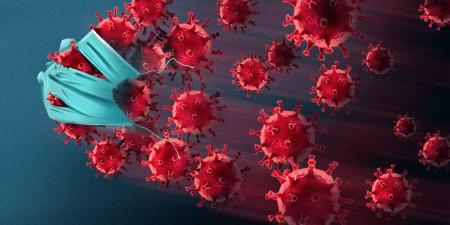Abstract
This article argues that drug shortages should be addressed as crises that exacerbate already compromised US health care infrastructure. Clinicians, especially pharmacists, can help limit threats that shortages pose to patients. For example, pharmacists can canvass procurement options, consolidate inventory, and prepare medications to prevent need for some clinical interventions. This article describes how pharmacists’ preparation and training equip them to help clinical teams navigate shortages by equitably rationing limited medicines, suggesting appropriate therapeutic alternatives, modifying drug administration routes, or delaying interventions. Pharmacists’ roles can be key, since good management of supplies during drug shortages can mitigate risk of worse-than-usual clinical outcomes, mitigate risk of medication errors, and reduce some financial burdens on the overall health care system.
Falling Short
Drug shortages have increased since 2007,1 limiting options for patients and forcing health care practitioners to adapt quickly in order to provide the best care possible. While no therapeutic category or dosage form is immune from the risk of a shortage, the most common shortages affect older, generic, sterile injectable drugs.1Chemotherapy drugs, antimicrobials, anesthesia agents, nutrition support products, and emergency response drugs have all been affected by severe shortages in the past several years.1 The ongoing threat that drug shortages pose to our national health care infrastructure has even been considered a risk to our national security.2
While there are hundreds of ongoing drug shortages at any given time,1 there are often strategies practitioners can implement to reduce their impact.3 When the pharmacy team learns about a drug shortage, it immediately plans how to manage the shortage. By using data on current inventory levels and utilization trends, the team calculates how long the supply on hand will last and begins exploring alternatives while also investigating the cause of the shortage to project its severity and duration. In cases in which the pharmacy can successfully plan ahead and manage inventory, patients and non-pharmacy members of the health care team might not even be aware of the shortage. In other cases, clinicians must make difficult decisions about how a scarce resource must be rationed to ensure equitable use when no acceptable therapeutic alternatives exist.
In general, strategies used to mitigate the impact of drug shortages can be broken down into 2 categories: operational and clinical. Operational changes include procuring drugs from alternative suppliers or from compounding outsourcing facilities, sourcing different vial sizes or concentrations, employing different means of drug preparation in the pharmacy, repackaging larger vials as unit-of-use doses, and updating electronic health records (EHRs), smart infusion pumps, and other health care technologies. Clinical strategies include conversion to other dosage forms (eg, from injection to oral tablet or capsule), conversion to other routes of administration (eg, from small-volume parenteral infusion to intravenous push injection), therapeutic interchange with an alternative drug, or rationing.3 Many of these changes present ethical challenges, as patients may be put at increased risk of medication error, receive second- or third-line treatment, or have care delayed or canceled.
Clinical and Financial Consequences of Drug Shortages
While any clinician can attest to the impact drug shortages have on daily practice, there is a general lack of comprehensive information about the clinical and financial effects of shortages. Indeed, information that is available may underestimate the true impact.4 Comparisons of standard-of-care treatments to alternatives implemented in response to a shortage are not common in the medical literature. For example, a 2017 publication reported higher in-hospital mortality among patients with septic shock admitted to hospitals in which use of norepinephrine relative to other vasopressors decreased by at least 20% due to a shortage of norepinephrine.5 Evidence of harm due to medication errors associated with shortages is more widely available. The Institute for Safe Medication Practices has published reports about deaths and other harms caused by medication errors, substitutions, or omissions associated with drug shortages; 15 deaths in a 15-month period were reported in 2011 and 2012 due to such errors.6,7 Lesser harms associated with drug shortages are common; in a 2022 American Society of Health-System Pharmacists survey, 7% of respondents reported at least one shortage-related medication safety event that caused at least temporary patient harm.8 Moreover, numerous cases of adverse events, including deaths, have been reported as a result of compounding errors or contamination during the compounding process.6,9,10 Organizations performing compounding or using outsourcing facilities should be aware of the risks and ensure that their compounding program or the outsourcing facility is in compliance with applicable standards, laws, and regulatory guidance.
The financial impact of shortages is also difficult to ascertain. Therapeutic alternatives may be more costly than the standard of care. Outsourced compounded products are typically more expensive than their commercially manufactured counterparts.11 The cost of a drug that has been in short supply can also increase after a shortage, adding to the overall expense of a shortage.12 From interdisciplinary action plans to inventory movement to bedside care, implementing strategies to manage drug shortages is often labor intensive. A 2019 report estimated that the labor cost of drug shortages is about $360 million in annual health care expenditures.13 Given the increasing number of drug shortages and added labor expenses experienced during the COVID-19 pandemic, this number likely underestimates the current cost of managing shortages. The increased burden on clinicians—monitoring supply availability, following up with patients, and communicating about preferred alternatives—adds stress to a workforce already challenged by burnout and staffing shortages.
Operational Strategies
Operational strategies often result in no clinical change to a patient’s treatment. Organizations may begin shifting inventory of drugs in short supply to either centralized locations or patient care areas where product may be more urgently needed, or both. Moving product to centralized locations, such as the pharmacy, allows more oversight of rationing and close monitoring of days’ supply on hand.
When faced with a shortage, purchasers will also begin exploring alternative products and suppliers. Alternatives can include the same product from a different manufacturer or sourcing from a secondary wholesaler. “Gray market” vendors may also advertise drugs in shortage, but purchasers should be aware of extreme price markups and that counterfeit products can be introduced through the gray market.14 As discussed below, alternatives can also include compounding or using a different package size, strength, or formulation of the same drug.8,15,16,17,18
Compounding is not a comprehensive solution to drug shortages, but it is a common strategy to address specific shortages.
Compounding options include either preparation in a hospital or health-system pharmacy or buying from a US Food and Drug Administration (FDA)-registered 503B outsourcing facility. Compounding can involve starting with FDA-approved commercial products or starting from nonsterile bulk drug substances, which requires special expertise and compounding conditions. Compounding is not a comprehensive solution to drug shortages, but it is a common strategy to address specific shortages. Outsourcing facilities cannot begin compounding a copy of an FDA-approved commercially available product until it appears on the FDA drug shortage list, which can limit how quickly they can respond.19 To provide supply of a drug in shortage, outsourcers must find suitable suppliers of bulk ingredients and materials, research a suitable formulation of the drug, conduct stability studies to determine an appropriate expiration date, and complete sterility studies to ensure that the final product is not contaminated.20 These steps, while important and necessary, can delay the ability of an outsourcer to respond to a shortage. Outsourcing facilities are capable of making thousands of units of drug products but cannot match the millions of units that may be needed to address a shortage of a commercially manufactured product. Rationing and other mitigation strategies may also be required even if a supply of a product is available from an outsourcing facility.
Pharmacies may also prepare drugs differently or source different dosage forms. For example, a hospital may typically purchase premixed infusion bags of a medication, but in the event of a shortage, it may have to prepare doses from bulk vials of medication and individual infusion bags. Pharmacies may also repackage vials or bottles into smaller, unit-of-use doses to prevent waste. For example, during a recent critical shortage of intravenous contrast media, pharmacies had the option of repackaging vials or bottles of contrast into syringes that could optimize supply and prevent waste of unused contrast.21 However, such changes increase the risk of dosing errors. Drug preparation thus should be done in a sterile environment and pharmacy cleanroom to prevent contamination and protect patient safety.22
Perhaps most critical to protecting patient safety is coordinating updates within various technologies across the health system. Many hospital health information technology systems, including EHRs, smart infusion pumps, automated dispensing cabinets, and other technologies, include product-specific information such as National Drug Code number, barcode, or other machine-readable coding, as well as package size and concentration. Whenever changes are made to products, each of these technologies should be reviewed and updated accordingly to ensure seamless transition and reduce the risk of error.3
Clinical Strategies
Clinical strategies generally affect the delivery of patient care in some way. In some cases, the patient may receive the same drug but through a different route of administration. Switching from intravenous or other injectable forms of medication to oral doses is common when an oral equivalent is available and clinically appropriate.15,16,17,18 During the shortage of small-volume saline bags in the wake of Hurricane Maria’s destruction of several pharmaceutical manufacturing facilities in Puerto Rico, patients were given oral electrolyte solutions instead of intravenous hydration. In other cases, nurses were asked to stand at the bedside and administer medications diluted in syringes instead of administering drugs using a traditional saline bag and infusion pump.15
The more impactful clinical strategies involve therapeutic alternatives, rationing criteria, and even delayed or canceled treatment. Therapeutic alternatives can range from easily substitutable drugs within the same drug class to an entirely different course of chemotherapy, for example. In 2018 and 2019, several blood pressure medications within the angiotensin II receptor blocker (ARB) class were recalled due to nitrosamine impurities found in the tablets.23 Although there may be pharmacogenomic and insurance coverage considerations,24,25 transitioning a patient to another drug within the ARB class is not generally a clinically significant change. In 2022, a significant shortage of stimulants used to treat attention-deficit/hyperactivity disorder presented a similar but more difficult challenge,26 as transitioning between these agents can take time for titration to optimally efficacious dosages.27 Response and side effects to each drug will vary by individual, making it more difficult to find the best alternative for an individual patient.
Rationing is common in hospitals experiencing shortages of medications8,15,16,17,18 and involves reserving the medication for a specific indication or patient population with limited therapeutic alternatives. These restrictions can ensure a drug in short supply is available for patients with the most critical need. If a patient does not meet the rationing criteria, they may be converted to another dosage form or route of administration of the same drug, or they may be changed to a therapeutic alternative or even nonpharmacological treatment. In the case of chemotherapy shortages, rationing can be especially challenging, as clinicians must decide whether to reduce doses, extend cycle intervals, omit a drug from a regimen, or switch to a less optimal regimen.28,29 To guide decision making, clinicians and ethicists can evaluate whether treatment has a curative or palliative intent and the expected success of treatment, but, ultimately, some patients will receive suboptimal therapy.3
Mitigation Solutions
Drug shortages are a disruptive and costly part of the current health care landscape. They can prevent patient access to optimal treatments and compromise health outcomes by increasing risk of morbidity and mortality. Mitigating strategies include clinical interventions, such as rationing, changing dosage forms, and therapeutic interchanges. Operational strategies include finding alternative sources, using different preparation methods, and compounding. The drug shortage crisis should be considered a threat to our nation’s health care security, and solutions must be implemented to prevent further compromising patient care.
References
-
Drug shortage statistics. American Society of Health-System Pharmacists. Accessed May 26, 2023. https://www.ashp.org/drug-shortages/shortage-resources/drug-shortages-statistics
-
Homeland Security and Governmental Affairs Majority Committee staff. Short supply: the health and national security risks of drug shortages. US Senate Committee on Homeland Security and Governmental Affairs; 2023. Accessed May 26, 2023. https://www.hsgac.senate.gov/wp-content/uploads/2023-06-06-HSGAC-Majority-Draft-Drug-Shortages-Report.-FINAL-CORRECTED.pdf
- Fox ER, McLaughlin MM. ASHP guidelines on managing drug product shortages. Am J Health Syst Pharm. 2018;75(21):1742-1750.
-
Drug Shortages Task Force. Drug Shortages: Root Causes and Potential Solutions. US Food and Drug Administration; 2019. Updated February 21, 2020. Accessed May 26, 2023. https://www.fda.gov/drugs/drug-shortages/report-drug-shortages-root-causes-and-potential-solutions
- Vail E, Gershengorn HB, Hua M, Walkey AJ, Rubenfeld G, Wunsch H. Association between US norepinephrine shortage and mortality among patients with septic shock. JAMA. 2017;317(14):1433-1442.
-
A shortage of everything except errors: harm associated with drug shortages. Institute for Safe Medication Practices. April 19, 2012. Accessed May 30, 2023. https://www.ismp.org/resources/shortage-everything-except-errors-harm-associated-drug-shortages
-
Drug shortages: national survey reveals high level of frustration, low level of safety. Institute for Safe Medication Practices. September 23, 2010. Accessed May 30, 2023. https://www.ismp.org/resources/special-issue-drug-shortages-national-survey-reveals-high-level-frustration-low-level
-
American Society of Health-System Pharmacists. Severity and impact of sterile injectable drug shortages. American Society of Health-System Pharmacists; 2022. Accessed May 26, 2023. https://www.ashp.org/-/media/assets/drug-shortages/docs/ASHP-Sterile-Injectable-Drug-Shortages-March2022.pdf
-
US illnesses and deaths associated with compounded or repackaged medications, 2001-19. Pew Charitable Trusts. March 2, 2020. Accessed May 30, 2023. https://www.pewtrusts.org/en/research-and-analysis/data-visualizations/2020/us-illnesses-and-deaths-associated-with-compounded-or-repackaged-medications-2001-19
-
US Food and Drug Administration. FDA’s human drug compounding progress report: three years after enactment of the Drug Quality and Security Act. US Food and Drug Administration; 2017. Accessed May 26, 2023. https://www.fda.gov/media/102493/download
-
Market for compounded drugs needs greater transparency and regulatory certainty. Pew Charitable Trusts. June 29, 2020. Accessed September 28, 2023. https://www.pewtrusts.org/en/research-and-analysis/reports/2020/06/market-for-compounded-drugs-needs-greater-transparency-and-regulatory-certainty
- Hernandez I, Sampathkumar S, Good CB, Kesselheim AS, Shrank WH. Changes in drug pricing after drug shortages in the United States. Ann Intern Med. 2019;170(1):74-76.
-
Drug shortages and labor costs: measuring the hidden costs of drug shortages on US hospitals. Vizient. June 2019. Accessed May 30, 2023. https://wieck-vizient-production.s3.us-west-1.amazonaws.com/page-Brum/attachment/c9dba646f40b9b5def8032480ea51e1e85194129
-
Van Alstin C. “Gray market” vendors hike up prices during drug shortages, leaving hospitals in a bind. Health Exec. August 18, 2023. Accessed September 28, 2023. https://healthexec.com/topics/healthcare-management/healthcare-economics/drug-price-gouging-small-hospitals
- Mazer-Amirshahi M, Fox ER. Saline shortages—many causes, no simple solution. N Engl J Med. 2018;378(16):1472-1474.
-
Impact of injectable opioid shortage and update on small-volume parenteral solution supplies. American Society of Health-System Pharmacists. April 2018. Accessed May 30, 2023. https://www.ashp.org/-/media/assets/drug-shortages/docs/drug-shortages-svp-opioid-survey-report.ashx
-
COVID-19 periodic pharmacy resources survey results. American Society of Health-System Pharmacists. July 2020.
- Pedersen CA, Schneider PJ, Ganio MC, Scheckelhoff DJ. ASHP national survey of pharmacy practice in hospital settings: impact of COVID-19 pandemic on pharmacy operations—2020. Am J Health Syst Pharm. 2021;78(18):1701-1712.
-
Center for Drug Evaluation and Research. Compounded drug products that are essentially copies of approved drug products under Section 503B of the federal Food, Drug, and Cosmetic Act: guidance for industry. US Food and Drug Administration; 2018. Accessed May 26, 2023. https://www.fda.gov/media/98964/download
-
Center for Drug Evaluation and Research. Current good manufacturing practice—guidance for human drug compounding outsourcing facilities under Section 503B of the FD&C Act: guidance for industry. US Food and Drug Administration; 2020. Accessed September 28, 2023. https://www.fda.gov/media/88905/download
-
Considerations for imaging contrast shortage management and conservation. American Society of Health-System Pharmacists. Updated May 13, 2022. Accessed May 30, 2023. https://www.ashp.org/drug-shortages/shortage-resources/considerations-for-imaging-contrast-shortage-management
-
Injection safety: information for providers. Centers for Disease Control and Prevention. Reviewed March 2, 2011. Accessed May 26, 2023. https://www.cdc.gov/injectionsafety/providers.html
-
FDA updates and press announcements on angiotensin II receptor blocker (ARB) recalls (valsartan, losartan, and irbesartan). US Food and Drug Administration. November 13, 2019. Accessed May 26, 2023. https://www.fda.gov/drugs/drug-safety-and-availability/fda-updates-and-press-announcements-angiotensin-ii-receptor-blocker-arb-recalls-valsartan-losartan
- Flaten HK, Monte AA. The pharmacogenomic and metabolomic predictors of ACE inhibitor and angiotensin II receptor blocker effectiveness and safety. Cardiovasc Drugs Ther. 2017;31(4):471-482.
-
LeMoult C. Shortage of generic ADHD drugs leaves patients scrambling. GBH. January 18, 2023. Accessed November 15, 2023. https://www.wgbh.org/news/local/2023-01-18/shortage-of-generic-adhd-drugs-leaves-patients-scrambling
-
FDA announces shortage of Adderall. US Food and Drug Administration. Reviewed August 1, 2023. Accessed November 15, 2023. https://www.fda.gov/drugs/drug-safety-and-availability/fda-announces-shortage-adderall
-
Wolraich ML, Hagan JF Jr, Allan C, et al; American Academy of Pediatrics Subcommittee on Children and Adolescents with Attention Deficit/Hyperactivity Disorder. Clinical practice guideline for the diagnosis, evaluation, and treatment of attention-deficit/hyperactivity disorder in children and adolescents. Pediatrics. 2019;144(4):e20192528.
- Hantel A, Siegler M, Hlubocky F, Colgan K, Daugherty CK. Prevalence and severity of rationing during drug shortages: a national survey of health system pharmacists. JAMA Intern Med. 2019;179(5):710-711.
-
Vizient. Implications of the national BCG drug shortage. End Drug Shortages Alliance; 2023. Accessed May 30, 2023. https://info.enddrugshortages.com/External/WCPages/WCWebContent/webcontentpage.aspx?ContentID=68



